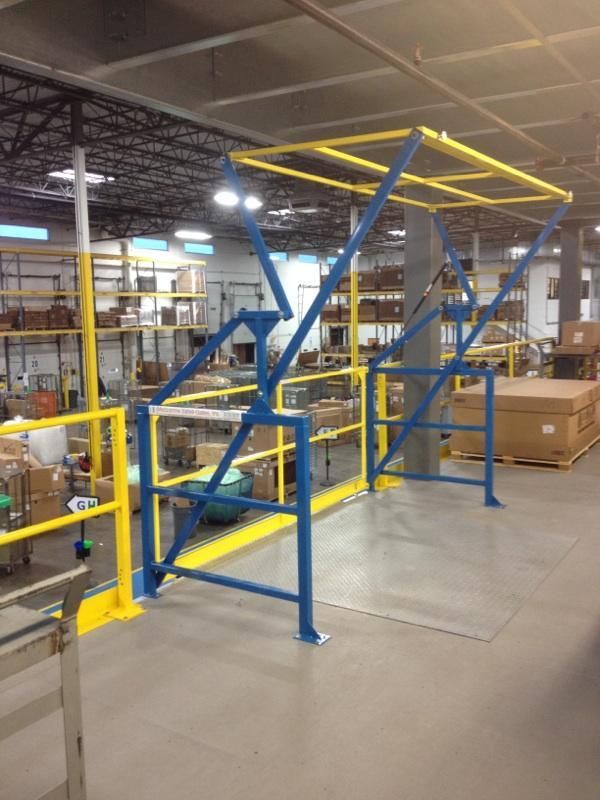
Importance of Material Handling Safety
Employees truly are a businesses’s most important assets. With the labor market extremely tight; I recently read that more people quit their jobs in November than any other month in the last 15 years; most are not planning to re-enter the traditional workforce. Add the stress of Covid in the workplace, which is also causing sick days and disruptions in day-to-day output. Another big stressor is inflation and the ability to get the materials as quickly as needed. Not to mention that everywhere you go you hear about “the problem in the supply chain” it may seem material handing and distribution industry is under siege. We believe it’s healthy, we’re just having some growing pains, which we can get around.
Temporary workers are one solution that many organizations in the industry are using to increase staff because of the extreme pressure to get products into the hands of businesses and consumers. With a lack of personnel, time and laser focus on productivity, safety must be built into the culture of the organization
While safety has always been important, the factors above make it extremely important in material handling facilities and operations now. Many material handling facilities and applications have also expanded upwards, with taller structures or modules for employees to work on.
Training new and temporary employees is imperative, and in today’s fast-paced environment it can be rushed in order to get employees up and picking. If the employees are working to pick from pallet drop areas or working on upper levels, fall protection is a key part of the safety equation. To make sure that your employees are using safety equipment correctly and away from any risks while working on upper levels, there are a few measures you can take.
Chose the Right Safety Systems
There are a variety of safety systems for employees working on upper levels. However, some work much better than others in material handling. For example, lanyards are a personal fall protection device, but they are not recommended for securing pallet drop areas because it depends on employees not only wearing them correctly, but they must be fitted to each employee. Lanyards on their own in this instance also don’t address OSHA’s mandate for a fall protection barrier on upper levels where employees are working around open pallet drop edges.
Fall protection safety systems also come in a variety of designs and sizes. It’s important to talk with your safety gate provider to discuss the application to get the right design and fit. If your safety gate does not provide adequate protection around the pallet drop area, employees can still be at risk. OSHA mandates that all elevated work platforms of 48 inches and higher be protected, and ANSI recommends guarding platforms at heights of 36 inches or more. Dual-gate systems are the best way to ensure compliance with ANSI and OSHA standards.
Ensure Safety Barriers are in Place at All Times
Safety barriers should be set into place and stationary. Depending on employees, especially new ones that may not have been property trained, to move a safety barrier in and out of place is very high risk - movable “guarding” like chains are often never moved into place, leaving employees working at exposed elevated ledges. Additionally, these “barriers” don’t provide the level of safety needed for employees working at height, let alone allow for the time for employees to move the barriers multiple times a day during peak operations. Bottom line is that the safety barrier just will not be moved into place every time is is necessary, and can expose tired workers to the risk for falling.
ANSI fall protection guidelines mandate a barrier is in place at all times, even while pallets are staged, being picked or in the process of being delivered or removed. The best solution for these areas is dual-gate fall protection system, which provides a barrier on elevated ledges and keeps employees from pallet drop areas when they are in use. These structures are secured into the flooring or racking, proving a fall protection system that workers do not have to move in and out of place.
Add Ons Can Increase Sanitation and ROI
While manual operation of dual-gate safety systems is very ergonomic and easy for employees to understand, adding power stations and remote frequency operation can help to increase sanitation in the facility by making these systems virtually touch-free.
Sensor and other technologies can also be added to safety systems to help increase plant efficiency and material tracking; this can equate to added ROI for each safety gate. Facility managers can integrate power stations with facility software to record when the safety gates were operated, which can determine what products have been delivered and processed, and identify areas to be replenished, as well as the time to complete each task.
While it can be easy to lose sight of safety in the crosshairs of the workday, fall protection for employees can be made very easy and help with plant productivity with the right protective guarding equipment.
This post first appeared in the March issue of Workplace Material Handling & Safety.